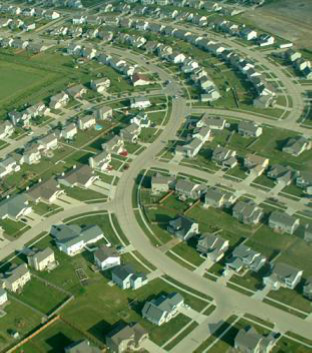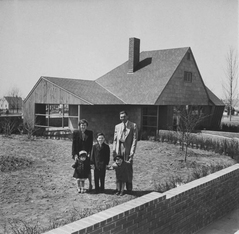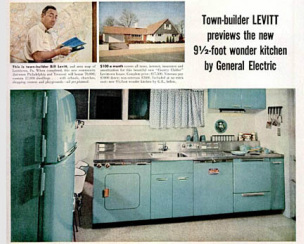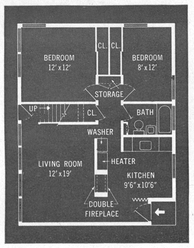Levittown Reformation
|
World War II created enormous demand for affordable housing. Returning soldiers longed to settle down with their families. (Perspective) "Since war's end, the U.S. has learned to build houses with the same mass-production hustle which it pops out cars and toasters. All the conditions were ripe. . . . there was the huge pent-up demand of the war, plus the requirements of more than 12 million marriages . . . .The money to build was also there; savings were at an all-time high and the Federal Government's easy credit permited an ex-GI to buy a $10,000 house with no down payment and 25 years to pay." (Time Magazine, August 11, 1952) The Levitt family, the largest U.S. builder following World War II, made Wright's design principles available to thousands of people.
|
Usonian Inspiration
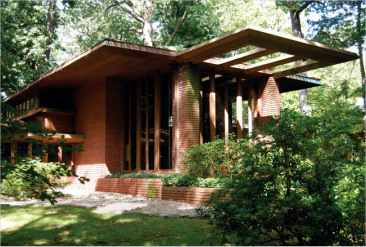
Rebhuhn House
In 1936, architect Alfred Levitt watched construction of a Usonian home in Long Island. "[Levitt] went to the [Rebhuhn House] every day to watch the brick and glass house that contained many of Wright's modernist designs, an open-plan interior, the unity of inside and outside, and the signature fireplace that was the home's focal point. Many of these features were included in the 1949 [Levittown] ranch." (Baxandall and Ewen, p. 132)
Levittown Ranch
"Despite its snugness, the 1949 Ranch House received praise from the public and architects alike. Architectural Forum announced 'Never before in the history of U.S. building has one house type made such an important impact on the industry in so short a time. '" (Baxandall and Ewen, p. 132)
|
Levittown home built in 24 hours
|
"On nearby slabs already dry, they worked in crews of two and three, laying bricks, raising studs, nailing lath, painting, sheathing, shingling. Each crew did its special job, then hurried on to the next site. Under the skilled combination of men and machines, new houses rose faster than Jack ever built them; a new one was finished every 15 minutes." (Time Magazine, Up from the Potato Fields, July 3, 1950)
|
